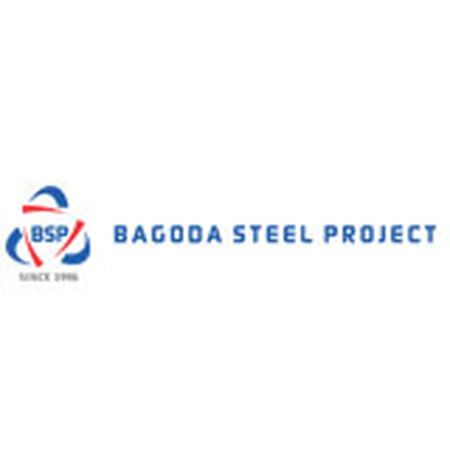-
 Find in Members
Find in Members Find in Videos
Find in Videos Find in Channels
Find in Channels
This website uses cookies to ensure you get the best experience on our website.
To learn more about our privacy policy Click herePrivacy Preference
Information

(Owner)
- Last updated November 15, 2021
- 0 comments, 1 view, 1 like, 0 followers, 1 member
You May Also Like
-

 December 8, 2021 - posted by Sonal Mitra0 comments, 0 reviews, 6 views, 1 like
December 8, 2021 - posted by Sonal Mitra0 comments, 0 reviews, 6 views, 1 like -


-

 April 10, 2023 - posted by Clara Felix0 comments, 0 reviews, 6 views, 1 like
April 10, 2023 - posted by Clara Felix0 comments, 0 reviews, 6 views, 1 like -
 August 6, 2023 - posted by Anna Adams0 comments, 0 reviews, 3 views, 1 like
August 6, 2023 - posted by Anna Adams0 comments, 0 reviews, 3 views, 1 like -

 August 6, 2023 - posted by floorsanding melbourneeasternsuburbs0 comments, 0 reviews, 2 views, 1 like
August 6, 2023 - posted by floorsanding melbourneeasternsuburbs0 comments, 0 reviews, 2 views, 1 like
Updates
Info
Basic Information
- Posted By: William Bruno
- Posted: Nov 16, 2021
- Last Updated: Nov 16, 2021
- Members: 1
- Views: 1
- Likes: 1
-
William Bruno likes this
Overview
Bituminous materials and asphalts find their major application in road construction, this is majorly because of their superb binding characteristics, water resistant abilities, relatively low cost and ease of availability. Bituminous materials consists of bitumen which can be described as a dark colored solid or a highly viscous cementitious substance. The material mostly consists of high molecular weight hydrocarbons which are obtained from refining of petroleum. The product has a number of applications because of their excellent adhesive properties.
What are the different forms of bitumen?
Cutback Bitumen: Normally heat is used to reduce the viscosity of bitumen, while in cutback bitumen this is done by using a suitable solvent.
Bitumen Emulsion: Bitumen emulsion is a liquid product in which bitumen is suspended in a finely divided condition in an aqueous medium and stabilised by suitable material.
Modified Bitumen: Certain additives or blend of additives called as bitumen modifiers can improve properties of Bitumen and bituminous mixes. Bitumen treated with these modifiers is known as modified bitumen.
What are some of the advantages of using bitumen?
- Lower susceptibility to daily and seasonal temperature variations
- Higher resistance to deformation at high pavement temperature
- Better age resistance properties
- Higher fatigue life for mixes
- Better adhesion between aggregates and binder
Types Of Asphalts Used On Roads And Pavements
Hot mix asphalt concrete
The commonest type of asphalt bitumen used, HMAC offers the most durability owing to being applied at higher temperatures which allows it to compact extremely well. Despite releasing large amounts of smoke and dust which are undoubtedly hazardous to health, it's the only form that can endure high traffic for long periods without cracking.
The high temperature allows proper drying of aggregates which maintains stability and prevents moisture from being trapped beneath. Equipment modifications are unnecessary because the technology is older than WMA. Cost is, therefore, significantly reduced especially when HMAC is applied to long stretches of road.
Warm mix asphalt concrete
In WMA, lower temperatures are applied to maintain viscosity. This has environmental benefits because less energy is used and less smoke is produced, two factors that are commonly experienced with hot mix asphalt.
The greener aspect aside, WMA is relatively easy to manipulate because viscosity is not very high. Compacting is also faster and easier which affects overall paving cost and labor. Roads located through tunnels where ventilation is limited usually see workers being subjected to a lot of smoke and dust. Since WMA reduces the amount of both, it's a good choice when constructing roads in confined spaces.
Cold mix asphalt
Where WMA and HMAC need to be mixed and applied under heat, cold mix asphalt eliminates the necessity of high temperatures. Soapy water is instead used to emulsify the asphalt. The end result, though suitable for patching HMAC, is not designed to withstand the daily grind of vehicles. As such, it's best applied on low traffic roads such as service roads and residential driveways.
Stone mastic asphalt
Also called stone-matrix asphalt, SMA is ideal for high traffic roads, residential streets and even roofs. It has a lower bitumen content with aggregates making up the chunk of the percentage.
No equipment modification is required for laying SMA though it has some limitations. Increased mixing time, material cost and initial low friction must be contended with. The low friction is a result of the binder film which, incidentally, is removed over time to increase friction.
Cut-back asphalt concrete
Considered to be the least environmentally friendly form, cut-back asphalt sees the binder dissolved in kerosene to reduce viscosity and make it easier to work with. The pollution generated is very high so it's no longer used in certain countries.
Despite being a widely used material, asphalt is hazardous to health through fumes and skin contact. However, road contractors and engineers make sure workers don full protective gear during the mixing and application phases to greatly minimize adverse effects.
No other material has proven to be so durable for roads as asphalt. So inspite of the health hazards it will continue to be the material of choice for as long as a substitute equalling it in strength and longevity is found. It's also 100 percent recyclable, an extremely important factor where environmental benefits and cost-effectiveness are concerned.






